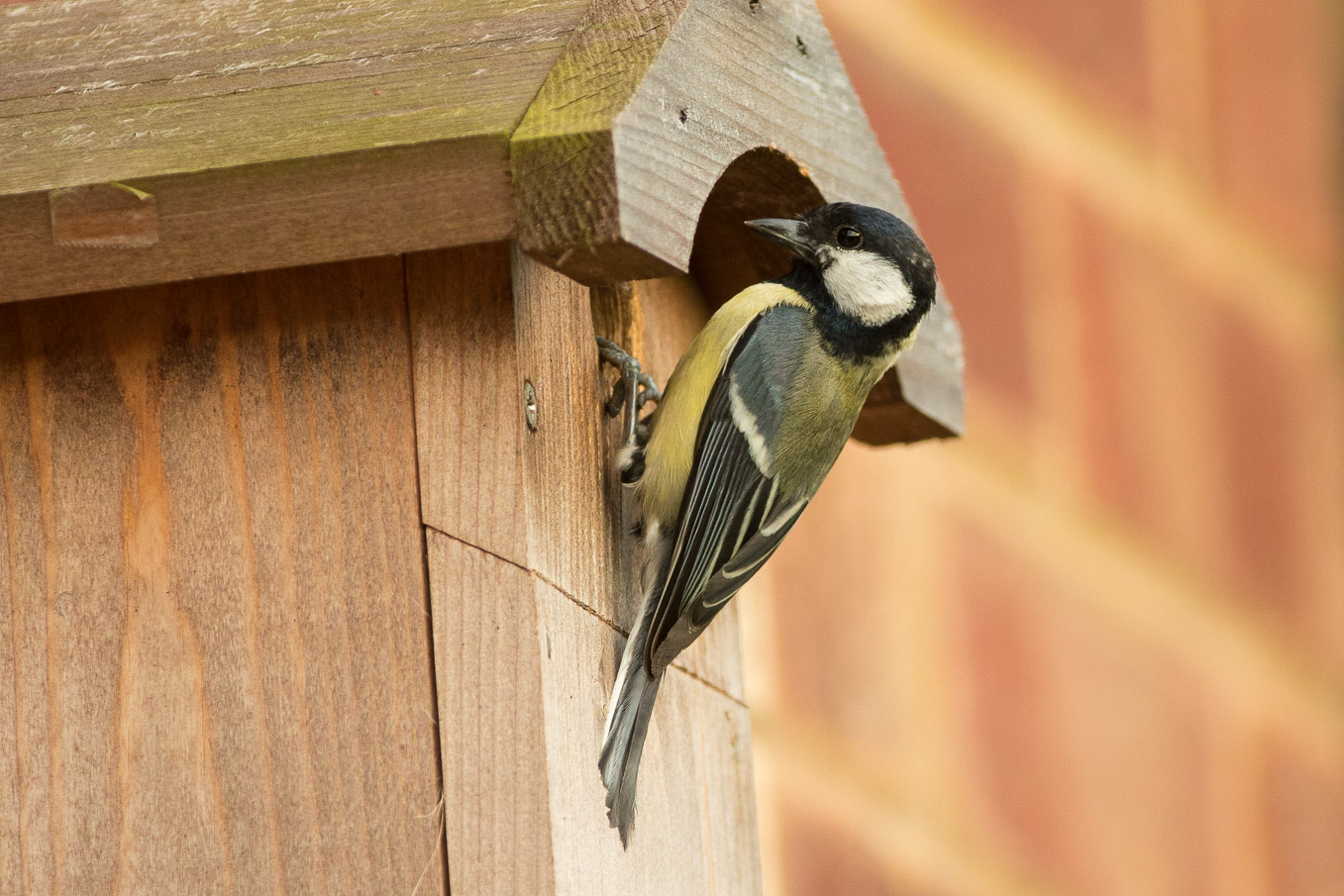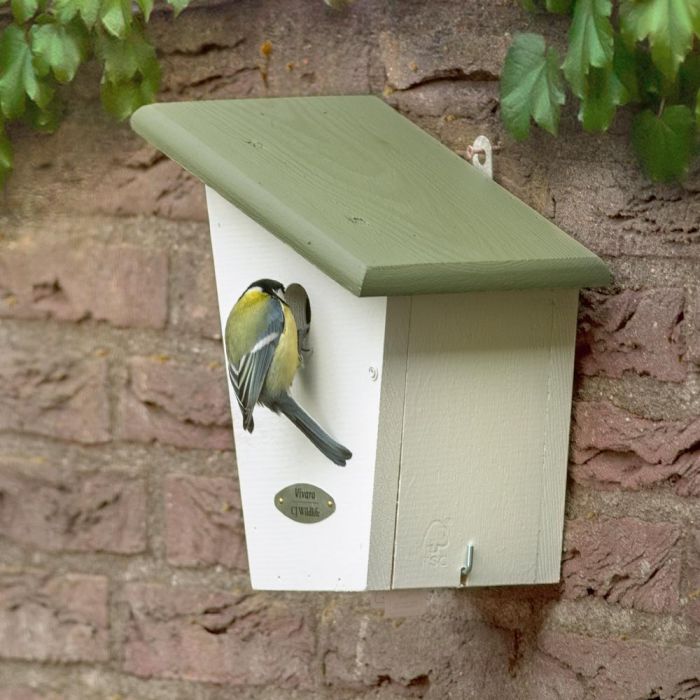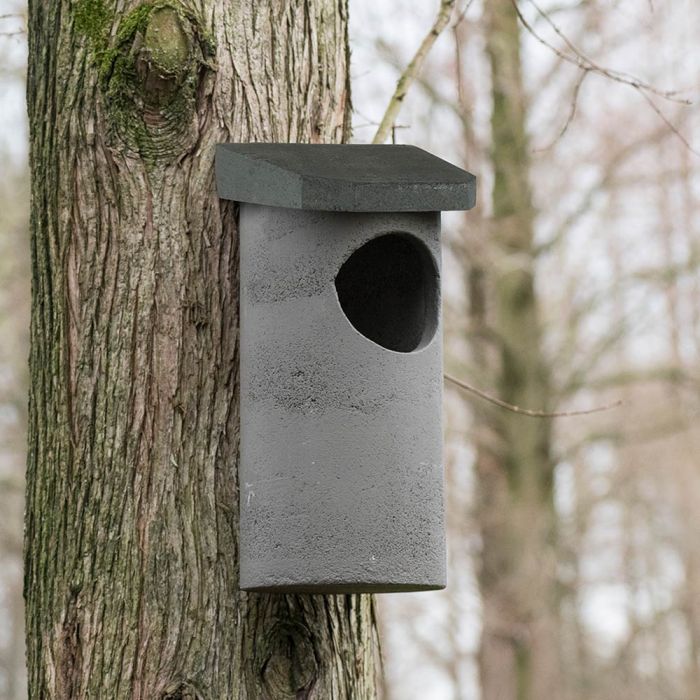
How to choose and position nest boxes for garden birds
With spring fast approaching now is the time to get nest boxes up for our feathered friends
We all love to see wildlife using our garden and what better way to make nature feel at home than providing a cosy nest box for your garden birds. With correct placement a well designed nest box can attract birds year on year and provide a great deal of pleasure each spring as well as being a vital shelter for wildlife in the colder months.
Design
The design of the box depends on the type of bird that you are keen to attract.
Boxes with holes will attract cavity nesters such as tits, sparrows and starlings. If you are very lucky and live near suitable habitat you may even attract nuthatches, pied flycatchers or redstarts.
The size of the hole may dictate which types of bird use the box. Blue tits and coal tits prefer small apertures of 25mm diameter, great tits will squeeze into 28mm with sparrows preferring 32mm. I would recommend the largest of these as, after a huge population decline, house sparrows need all the help we can give them and tits will use the boxes with larger holes anyway. If you hope for starlings then these like a roomy 45mm.
Nest boxes can be vulnerable to attack by predators so metal hole protectors can be a valuable addition.
Open fronted boxes are attractive to those birds that typically build in a bush or crevice. Robins take to these boxes and they are often marketed as robin boxes. Blackbirds may also use them though the box needs to be wide enough to accommodate a fairly large nest. In the past spotted flycatchers would have used boxes in gardens but they are a rare bird these days so you would be very lucky to host them now.
House martins will build a cup nest under eaves but with drier springs they may struggle to find enough mud or the nests may crack and fall destroying their attempt for the year. They will adopt nests built in previous years though so providing a suitable substitute can be a great boost. The cups are usually made from a mix of concrete and sawdust attached to a wooden board. They can be attached directly to the brickwork but you need a head for heights as they need to be under the eaves. House martins do like company so a group of these nests may all be occupied and even encourage birds to build additional nests.
Check out this guide to building your own house martin nest by recycling an old plastic ball.
Swifts, like house martins, will nest in the eaves typically of old buildings but can be encouraged to take up residence in artificial boxes. It can be a slow process attracting swifts to nest but there is plenty of evidence that playing calls will encourage prospective birds to come and inspect the new opportunities. The calls can be downloaded from here and played through a speaker at an upper window near the nests.
Build quality
It is important when buying (or building) a nest box to pay attention to the build quality. There are lots of companies who will literally staple something together with cheap materials and no care. A search online will soon produce a wide range of next boxes for less than £10 and whilst they may look great in the pictures I would advice a good read of the reviews as poorly made boxes are quickly found out!
Ideally a nest box should be built with solid treated timber, plywood will last a couple of years but inevitably damp will get into the layers and they will fall apart. Sturdy screws or nails should be carefully aligned so as not to protrude into the box (a sure sign of a lack of care). The design should include a way of mounting that will ensure security. Drainage holes are also essential as is a way to open the box to clean out between seasons.
A decent nest box doesn't need to cost the earth though and some established and respected wildlife product companies offer some well designed and built options. I recently bought some for my mother and after lengthy research decided that CJ Wildlife boxes were good value and looked great too. She was delighted with them and fingers crossed the birds love them too.
nest boxes from CJ Wildlife are stylish as well as functional
where to place your nestbox
The best placement of the nest box will be very much a combination of factors. Each garden is different but meeting the following basic principles should ensure the most successful outcome.
Position the box so that it will not be exposed to direct sunshine or cold/wet winds for prolonged periods. Generally this will mean in the north to east range but factoring in shade giving trees may allow other options.
Avoid mounting the box where predators might get close easily such as near tree branches or other routes of access. Hole fronted boxes are quite secure so can be mounted on a wall or fence. Open boxes require a more discrete site such as within ivy or other climbers.
Boxes should be placed at a height of at least 1m (2m for a hole fronted box) and ideally higher but again this should be considered with other factors. For example a 1m high open box in ivy would be better than 2m on an exposed tree branch.
The nest site should be free of too much disturbance. Birds will put up with a certain amount of comings and goings if not too frequent or prolonged but a quiet spot in the garden will suit them better. Think ahead, what might seem ideal in February when siting the box might not be so good come May when the BBQ is wheeled out!
Cameras
For years it has been possible to mount mini cameras into nest boxes and technology is getting smaller and smarter and more affordable. Green Feathers provide a helpful guide to those choosing cameras here: nest box camera chooser make sure you think about setting this up well in advance of the breeding season though as once the birds are in residence its too late to be fiddling around!
Maintenance
As with bird feeders, an important part of providing nest boxes is to maintain them well. Boxes can get damaged and will become dirty over time so an annual check up should be part of your routine. Nesting can occur right through the summer for some species so its a job best timed for the autumn (October onwards ideally). If possible bring the nest down from its mount and remove any nesting material from it. Give the box a good scrub with a very mild detergent solution rinsing thoroughly. Finally rinse the box with boiling water as this will kill any parasites that might be hiding in the nooks and crannies! Let the box thoroughly dry out before re-mounting ready for the next breeding season. An added benefit of cleaning in the autumn is that the box will be suitable for winter roosting too.
Winter roosts
A cosy nest box can be a godsend for small birds and even bats, mice and bumble bees will use them to roost. The same species to nest in them will often spend the night inside but wrens particularly will use boxes and often roost communally to share body heat. The highest number ever to be recorded was 63. For this reason it's great to put up nest boxes at any time of year and leave them out.
Larger birds
If you have land or a larger garden with mature trees or outbuildings you may consider supersizing your nest box provision. Tawny owls, kestrels, barn owls, stock doves and little owls will all readily use suitable boxes. The same principles apply for buying these, look for boxes made with care from quality materials. They are by nature heavy too so will need to be securely attached. Plan carefully how you will reach the height for positioning these too as there are bulky and cumbersome so preparation is key and don't take any risks.
A woodstone tawny owl box from CJ Wildlife
Hopefully these tips will help you provide for your nesting birds and if you have missed the breeding season already, don't worry spring will soon be around again so what are you waiting for!




